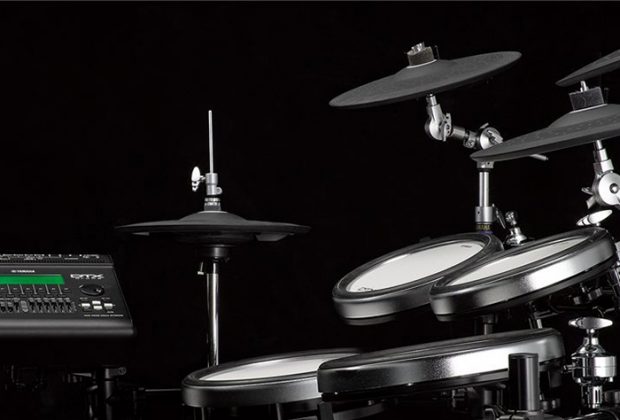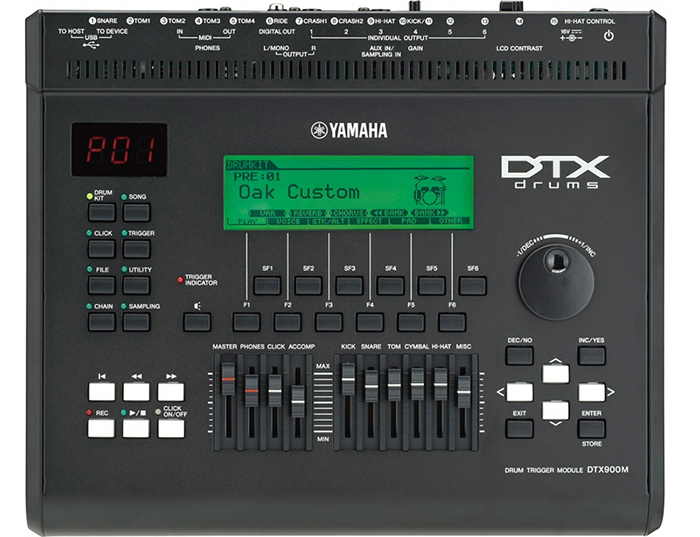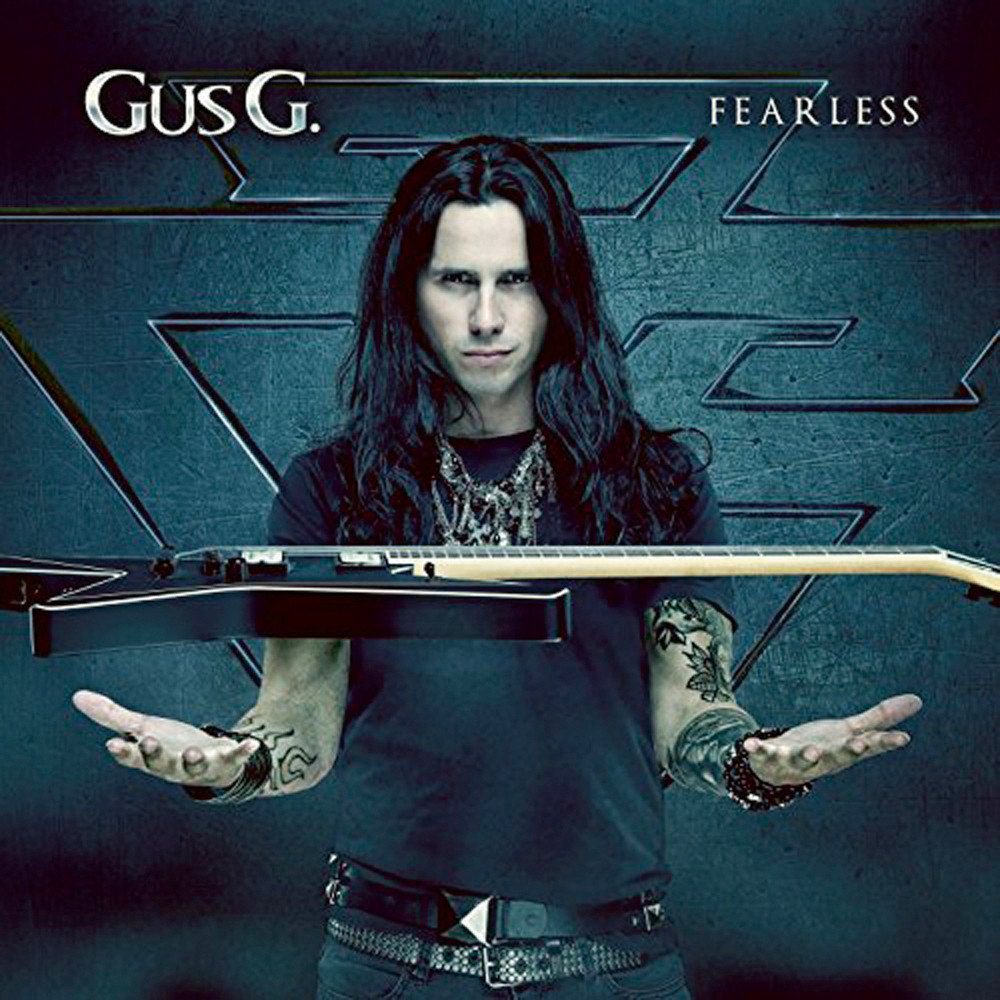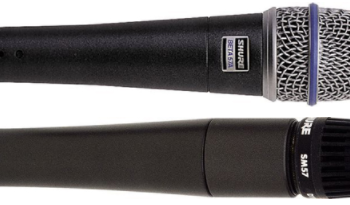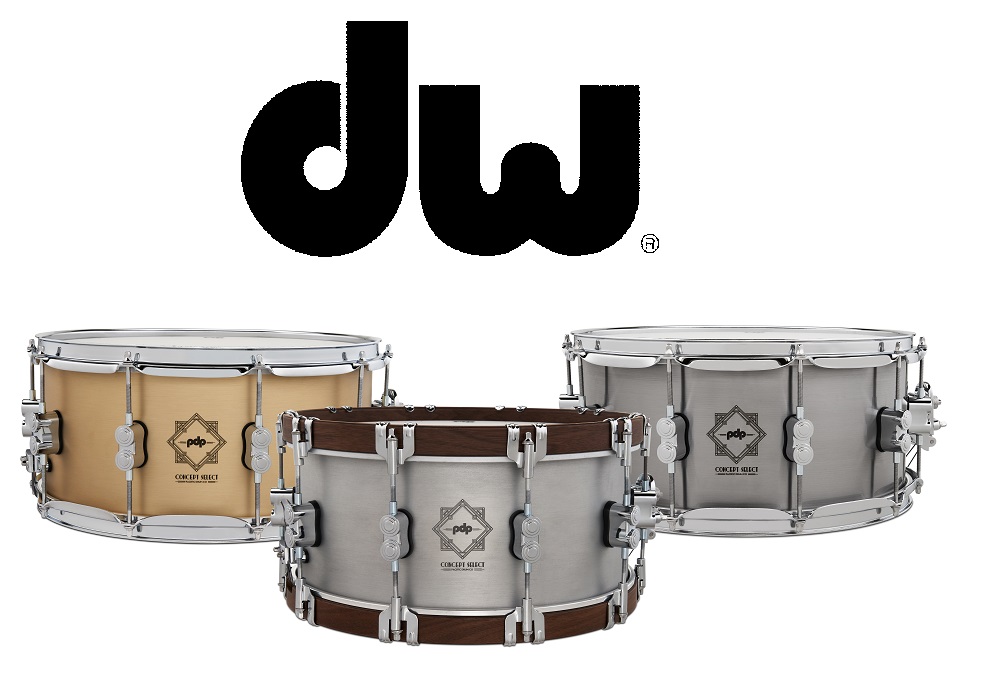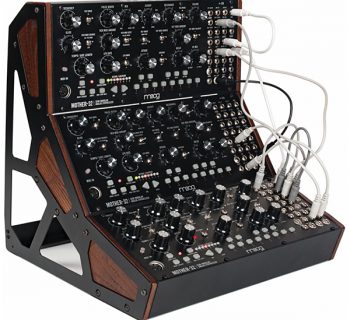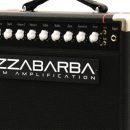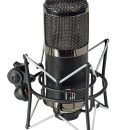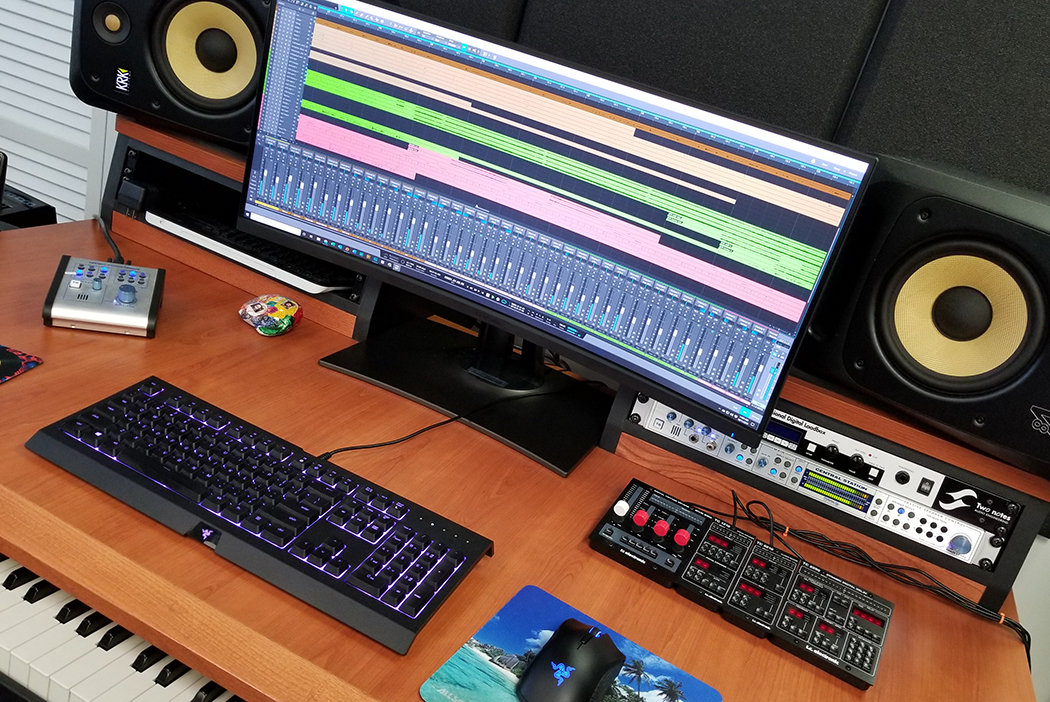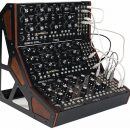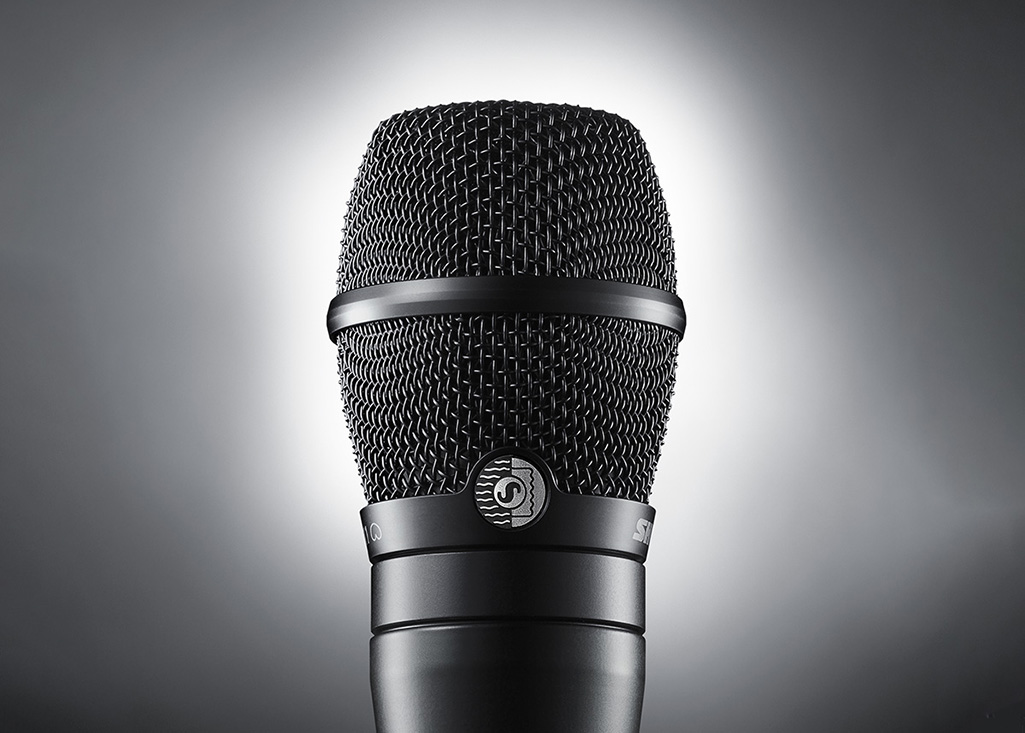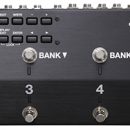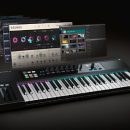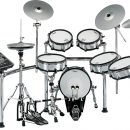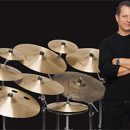If you’re serious about drumming in a rock or pop context, there’s never been a better time to jump on the electronic drums bandwagon. And if you’re ready to leave the acoustic kit at home, the Yamaha DTX920K kit may be just what you need to make the switch.
The Yamaha DTX920K is full of fantastic sounding acoustic and electronic drum sounds, but where the real love-fest begins is with the natural feel of the DTX pads, which deliver acoustic drums response in a package that offers a heck of a lot more flexibility. And thanks to the ability to load your own samples into the the DTX900M module (or create samples directly), you could even sample your acoustic kit and load it into the electronic set for your gigs or session work.
Features
The Yamaha DTX920K is a complete kit that includes the DTX900M sound module, XP120SD snare drum, two XP100T toms (10 inch), one XP120T floor tom (12 inch), one KP100 kick drum, two PCY135 cymbals, one PCY155 ride, RHH135 hi-hat. Supporting all of this are an included Yamaha hi-hat stand, snare stand, a custom rack for the toms, cymbals and brain, and lengthy cables and tie wraps to hook everything up. All you need to supply is your favorite kick drum pedal, and double-kick pedals are accommodated without any issue.
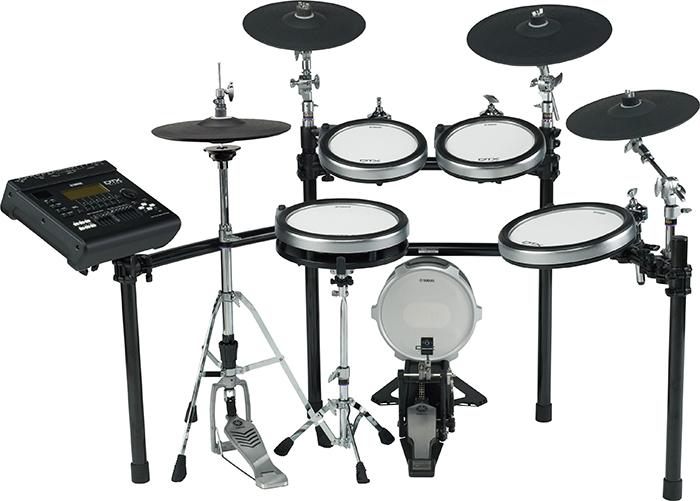 Whether observed in a web photo or looking at a kit from across the room, you might quickly dismiss the Yamaha drums as having rubber drum heads, but that mistake would be foolhardy indeed. The snare and tom pads feature a surface called TCS, Textured Cellular Silicone, which provides a surface that mirrors actual drumhead feel far better than any entry-level kit you may have banged around on in the past (more on this in Usability).
Whether observed in a web photo or looking at a kit from across the room, you might quickly dismiss the Yamaha drums as having rubber drum heads, but that mistake would be foolhardy indeed. The snare and tom pads feature a surface called TCS, Textured Cellular Silicone, which provides a surface that mirrors actual drumhead feel far better than any entry-level kit you may have banged around on in the past (more on this in Usability).
Each tom drum pad features three trigger zones: head, open rim, and closed rim, while the single-zone kick drum has a reinforced batter head and spring-loaded set screws that help you anchor it into your drum mat/rug. The snare pad is a bit more advanced, however. You have access to snare head, rim shot, and cross stick sounds, but at the turn of a control knob adjacent to the head (out of stick’s harm), you can throw the snares off just as with an acoustic kit, and then have access to three alternate snare sounds.
Speaking of those knobs, by default, the knobs on each of the toms enable you to adjust the tuning/pitch of your drums, plus you can assign them to control other settings if desired.
The cymbal pads are three-zone triggers, so you can easily generate different sounds such as playing the cup or the bell of your ride cymbal and then crashing it for effect.
The hi-hat is an interesting affair, as there is no bottom hat. Instead, there is simply a bottom plate that makes contact with the top hi-hat to generate sounds. You have access to six sounds (called voices) at your disposal: edge open and closed, tip open and closed, foot pedal, and heel splash.
This leads us into our exploration of the DTX900M trigger module, a massive brain filled with over 1,100 drums sounds and tons of connectivity. Many of Yamaha’s classic acoustic drum kit sounds are contained within, and this one module provides access to a Yamaha Oak Custom kit, Birch Custom, Maple, and many other acoustic drum sounds. It’s also full of classic and modern electronic drums, percussion instruments, and sound effects. The DTX900M ships with 50 predefined drum kits plus a user bank in which you can store up to 50 of your own custom kits.
Each core sound is called a voice, and Yamaha thoughtfully organizes these into voice sets. For example, one snare drum “sound” is comprised of six different voices (three with the snares on, three off). It would be quite tedious having to assign all of those voices individually when customizing drum kits, so Yamaha groups related sounds together into voice sets that can be assigned as desired.
You can layer up to 100 voices on each drum pad and either play them stacked or in an alternate mode intended for use with the internal melodic instruments. You can use this feature to play musical notes, chords, and melodies if you want more than just another drum kit.
The DTX900M is also a fully-functional sampler. While you could connect an instrument to directly sample its sounds for various effects in live use, we like the idea of connecting a microphone instead and sampling your personal acoustic drums! Load those samples into a custom kit and now you’ve got the best of everything: a collection of Yamaha-supplied electronic and acoustic drum sounds and your own personal kit, ready to take with you. Samples can also be loaded via a USB stick.
The DTX920M has digital effects, topped off by a selection of reverb presets borrowed from the classic Yamaha SPX2000 reverb unit. It also includes EQ and modulation effects including chorus, delay, phaser, flanger, and effects can be routed as either sends or inserts in order to recreate classic, buss-compression-like drum tones.
Groove Check and Rhythm Gate features are useful practice tools that analyze your performance in real-time whether playing to the internal songs or playing along to the click track. Groove Check lets you know percentage-wise how well you’re nailing the feel of a song or nailing your tempo, while Rhythm Gate mutes your drum hits that aren’t nailing the time. Play tight or go home!
There is a 64-note, polyphonic tone generator and a sequencer, too. When practicing along to a number of included demo songs in a range of styles, you can mute individual parts such as drums bass, and other musical accompaniments.
The sequencer is of more value to most gigging drummers than its use as a practice tool with demo songs. You can sequence your own rhythm accompaniments, like percussion tracks, for use in live performance. The click track is highly customizable, and by default, its output is routed to the headphones, but not to the master outputs.
The Chain mode is another powerful live performance tool. It lets you store a series of drum kit, song, and click track settings in sequence for your live shows, just like a set list for your drums. From one song to the next, select a different drum kit, or the same drum kit, sometimes the song has backing percussion tracks in the sequencer, other songs just have a click track, and so on.
Turning our attention to the hardware, you can build a pretty sizable drum kit with the DTX900M, as it has inputs for up to fifteen pads in all, with the first eleven labeled for standard drums and four “extra” pad connectors. Note that inputs 10 and 11 share one jack that can be split with a Y cable when not used by default for your kick drum.
In addition to stereo audio outputs, the DTX900M also features six individual outputs, and you can assign any drums to these, while also utilizing the stereo outputs for other parts of your kit. A S/PDIF jack also provides digital stereo out.
The DTX900M has MIDI In/Out as well as a pair of USB jacks. One USB port can be used to send digital audio from the module to a host computer for direct multi-track recording, while the other is used for connecting a memory stick or external hard drive to load samples and/or data. And with the inclusion of MIDI In, you can use the DTX900M as a sound source for other keyboards and MIDI controllers in your studio, too.
Looking at the top of the unit, controls are arranged logically for access to the various operating modes, and sliders provide easy access to separate volume controls for master volume, headphones, click track level, accompaniment tracks, and then essential parts of your drum kit: kick, snare, toms, cymbals, hi-hat, plus one assignable slider.
The large, monochrome LCD display shows the name of the selected kit and various editable parameters of your drum kits, while the kit’s patch number is displayed in a separate, large LED display.
The differences between the DTX900 and DTX900M module are minimal: 512MB of SDRAM sample memory is built in (and non-expandable), the M has an automatic sleep mode (programmable), and it has addition trigger setups and support for the latest pad types. The input gain setting now runs from 0 to 127, whereas the DTX900 goes from 0 to 63. Practically, the two devices are the same.
Usability
The deal breaker for many players when it comes to electronic drums has often been, how do they feel? No drummer wants to hit a stiff, rubber pad if they can avoid it, and until now, we thought mesh heads provided the best compromise between real drum head and electronic drum head feel. After spending five minutes behind the Yamaha DTX920K, our opinion was forever changed, because the DTX pads feel fantastic!
From a distance, they look like rubber practice pads, but upon first contact, we knew these were not the pads of yesterday. The stick response and feel of the heads were fantastic! Our stick rebound had the quick response of a good practice pad but with the feel of a real, tightly tuned, drum head. The response was superior to mesh heads, which always felt great to us, but slightly different than actual drum heads. The DTX pads feel like drum heads, and you can hit them as hard or soft as your playing style dictates. We primarily stuck to our favorite 5B sticks.
The kick drum response gave the kind of rebound that you expect from a tightly tuned drum head, and we loved that the design accommodated double-kick pedals. We used our DW 5000-series double-kick pedal without fail, and didn’t need to make any special adjustments after taking it off of our acoustic kit.
The cymbal pads were typical in their response, and we appreciated their three-zone functionality, particularly on the ride cymbal. We could hit the cup or bell for different tones, and then also crash the cymbal if desired. If there is anything to disappoint, that would be the response of the hi-hat. Although none of the plastic cymbal pads feel like actual cymbals, they weren’t at all uncomfortable to hit. But we just couldn’t get the kind of detail out of our hi-hat performance as we were accustomed to on actual metal.
Setup of the actual kit took around an hour, starting with the sturdy, custom rack and stands. The cymbal stands are typical Yamaha boom stands that store within the bottom section and can be used straight or expanded into a boom configuration. Our one complaint, though, was the lack of isolation from vibration within the cymbal stands. When we chose to expand the kit and augment it with some acoustic cymbals and percussion, we decided to mount the acoustic crash and ride cymbals on the rack hardware using the supplied stands. However, once we started to play the kit, hitting our acoustic cymbals inadvertently triggered the nearby toms, regardless of how we adjusted their sensitivity. We ultimately had to put the acoustic cymbals on separate stands to avoid accidental triggering.
The Yamaha DTX900M module was easy to operate for the basics, but its interface is something of a throwback to a previous decade and could stand a significant overhaul. The main interface relies on selecting from multiple soft keys beneath the display, but many settings require additional use of directional arrow keys to scroll over to settings not visible on the main page.
Selecting drum kits was as easy as turning a big scroll wheel that cycled through the bank of preset kits followed by bank of user kits (where you save your custom drum kits). Sliders made it easy to adjust individual drum levels on the fly, for example, making our kick or hi-hat louder/softer in relation to the rest of the kit, and the dedicated headphone level made it easy to monitor our drums without impacting the main outputs feeding our PA system.
Timing is everything, and the DTX900M made easy work of using a click track. We could dial in the tempo easily, and we particularly loved that by default, the click track audio was routed to the headphone output (with easy level control) but not to the main outs. You can save click track settings to song chains, and it was easy to save different drum kits and click track info in series for our live sets.
Editing drum kits was relatively easy courtesy of the voice sets, and the process basically involved hitting a pad to select it, and then scrolling through the hundreds of sounds in the DTX900M to select our choice sound.
Unfortunately, the monochromatic LCD display looks a bit long in the tooth compared with the modern, color interfaces found on other music gear today. We found the interface particularly uninspired when it came time to set up the drums for recording in the studio. In order to take advantage of the individual audio outputs, you have to first manually assign each drum pad to a specific output or pair of outputs. Besides the complexity of scrolling through the interface to find where to make the setting changes, there was no global setting to save the output assignments! So if you want to record with five different kits that each use the six individual outputs, you have to go through the process of manually assigning outputs for all pads in each kit, and then save those kits to the User data bank.
Alternatively, you can record digitally via the USB output to a computer and avoid the output assignments, but in most studio environments, there is no short path to connect the DTX900M’s USB output to the computer running DAW software. It works fine for a drummer recording direct to their laptop at home, but given that this is the flagship kit for stage or studio, it’s time for a refreshed user interface that is more drummer friendly.
Sound
The DTX920K sounds fantastic! If you only ever played the first kit, a Yamaha Oak Custom, you might be totally satisfied with this alternative to lugging one of those premium wooden kits around from gig to gig. And in the studio, no microphones necessary! But if oak isn’t your wood of choice, other kits are built around Yamaha birch, maple, and beech woods.
The kicks and snares are fantastic, and because of the way Yamaha implements their voice sets, all related sounds for one pad change when you select new sounds. For example, the snare contains different sounds for different velocities, but also plays rimshot sounds when you hit the front portion of the rim, and side stick sounds when you strike the rim in the upper regions. Selecting a new snare drum sound replaces/updates all of the sounds together, so it’s quick work to customize a kit to your liking.
Some of the snare sounds have obviously louder snare wires in their sound, others have the sound of a strainer that is more loosely taught or thrown off.
If you’re playing pop, hip-hop, dance, or related genres, you’ll really enjoy the electronic percussion options on tap. The Hip Hop, R&B, and House kits were favorites, though we often found ourselves substituting a few sounds, like replacing the kick with a sound more to our personal liking. There are plenty of classic drum machine sounds to choose from.
Different kits also have various reverbs and different sound effects, so you have rock kits with big ‘80s hair (err, we mean reverb and gates), small jazz-club kits, and so on. If you want to zone out for a bit on your own, the Sci-Fi kit has fantastic, synth-like ambient textures that accompany your playing.
Being able to record/sequence your own songs is great, because you can set up rhythm tracks with percussion or tambourine/claps/etc. and then play your kit sounds live.
The cymbals sound great, and when we set up a hybrid kit in the studio containing real cymbals alongside the electronic ones, there was no startling contrast between the sounds… it all came across sounding like one cohesive kit.
Our only disappointment was with the sound of the toms. This is where you can hear the most obvious differences in tone between the various wood shells, and we love the full, natural decay of each drum sound. But the initial attack of each tom hit is just a bit too strong, creating a slightly artificial/electronic sound to the initial hits. On slower fills and ballad work, it’s not problematic, but when playing fast 16th note fills, you do end up with a slightly artificial sound to the tom hits until the last note, where you hear the decay better. The sounds are top class, but this is the one area where we see room to make things sound just a little bit better.
Documentation and Product Support
The DTX920K drum kit includes a few different manuals for the pads, the brain, and setup. But it’s confusing figuring out where exactly to begin, as it’s more like a collection of separate product boxes that were all just thrown together in a bundle. A Getting Started guide unique to the package bundle would be a welcomed addition. But that said, the user’s manual wasn’t too difficult to follow, though operation of the DTX900M sometimes feels a bit long in the tooth from the interface perspective.
Price
The Yamaha DTX920K (MSRP $5,749) sells for approximately $4,250. Compared to the price of its biggest competitor’s flagship kit, this is a relative bargain, and obviously compared with purchasing premium Yamaha acoustic drums, it’s also a nice value.
The rack hardware is quality stuff, and of course the quality of the pads is out-of-this-world. If you need diverse sounds, the ability to use custom samples in your live performance (including sampling your entire studio kit), a flexible recording solution, or just something that weighs less for your constant gigging, you can’t go wrong here. Gripes aside, we love playing this kit, and will be very sad to see it returned.
Contact Information
Yamaha
usa.yamaha.com
| Evaluation Short List: |
|

